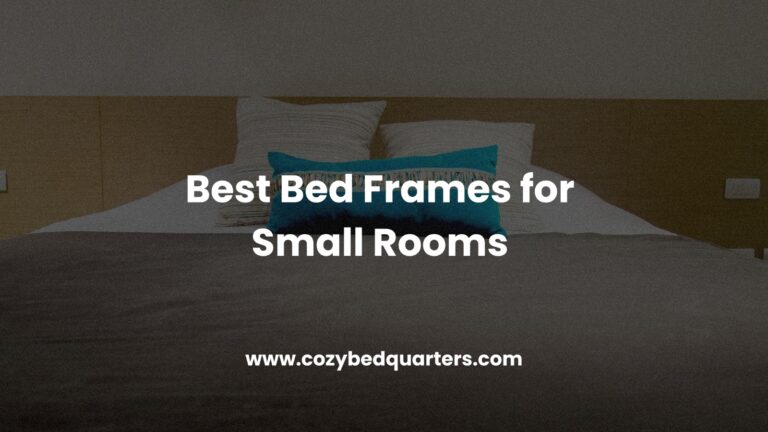Bed Materials
Explore the world of bed materials—from latex and memory foam to hybrids and organic blends—so you can discover the ideal material that matches your sleep style, comfort needs, and wellness values.
Key Takeaways
- Bed materials directly influence support, temperature regulation, lifespan, and eco-friendliness.
- Latex offers resilience and natural bounce, while memory foam brings pressure relief and contouring.
- Hybrid mattresses blend coil support with foam or latex for balanced comfort.
- Organic materials such as wool and cotton enhance breathability and reduce chemical exposure.
- Proper mattress care—rotation, protection, and spot cleaning—extends performance.
- Matching materials to sleep position, body weight, and health needs ensures better rest.
- Educating yourself empowers smarter mattress investments and better sleep habits.

The Big Picture: Why Bed Materials Matter
Choosing the right bed materials affects more than just comfort—it shapes your sleep environment, physical wellbeing, and long-term costs. Whether you’re a hot sleeper, allergy-sensitive, or back-pain prone, the core of your mattress design—the materials—determines how well it performs. That’s why it’s worth digging into what makes each material tick. We explore these psychological and physical dimensions further in this bedtime psychology guide.
1. Latex: Natural, Durable, and Bounce-Back
Latex mattresses, produced from rubber tree sap, bring natural resilience with a slightly springy feel. Talented at maintaining shape, latex supports spinal alignment and yields under pressure points without excessive sinkage. It’s breathable, especially Talalay-processed latex, and resists dust mites and mold.
Pros: Long lifespan (up to 15+ years), hypoallergenic, eco-friendly, cooling and buoyant.
Cons: Can feel firmer, higher upfront cost, heavier than foam.
2. Memory Foam: Personalized Contour and Motion Isolation
Memory foam shaped the modern mattress revolution. It’s viscoelastic—soft at body temperature, reshaping to your figure to alleviate pressure, especially at shoulders and hips. Ideal for side sleepers, and outstanding for couples who need motion isolation.
Pros: Excellent pressure relief, contouring comfort, minimal partner disturbance.
Cons: Can trap heat (unless gel-infused or ventilated), may feel “stuck” or slow to respond, limited edge support in some designs.
3. Hybrid Mattresses: Best of Both Worlds
A hybrid marries coil springs with foam or latex comfort layers. The innerspring core provides lift and airflow, while the foam/latex top layers deliver cushioning and pressure relief. This combination supports mixed-float preferences—neither too firm nor too soft.
Pros: Balanced comfort, edge support, cooling, responsive feel.
Cons: More complex build can raise price, heavier than all-foam.

4. Organic Options: Clean, Chemical-Free Sleep
For eco-minded sleepers or those with sensitivities, organic mattresses include certified cotton, wool, and natural latex. These materials avoid fire-retardant chemicals and off-gassing, offering breathable comfort with fewer allergens.
Pros: Chemical-free labeling, sustainable sourcing, natural temperature control, biodegradable materials.
Cons: Often higher cost, may require flipping if wool compresses over time.

5. Other Materials & Special Builds
- Innerspring: Classic coils with minimal foam; affordable and airy but may feel bouncy.
- Gel-Infused Foam: Cooler than traditional memory foam, with improved heat dispersion.
- Polyfoam: Budget-friendly transition layers, though less durable than latex/dual-density foams.
- Wool or Silk Layers: Natural temperature regulation added to mattress covers, ideal for hot climates.
6. Care & Maintenance for Every Mattress Type
Proper care keeps materials performing at their best longer. Follow these steps, and don’t miss our full mattress hygiene and cleaning guide for deeper insights:
- Rotate: Every 2–3 months for all-foam or latex, every 6 months for hybrids with flippable layers.
- Protect: Use a waterproof, breathable mattress protector to guard against spills and allergens.
- Clean: Spot-clean with mild detergent, avoid soaking. Mattress covers may be machine washable—follow label instructions.
- Air Out: New mattresses off-gas—unbox in a well-ventilated room and allow 24–48 hours to settle.
7. How to Choose the Right Bed Materials for You
Understanding your sleep needs and how sleep disorders affect rest can guide your decision. Materials influence everything from spinal alignment to temperature control, crucial for managing conditions like insomnia or back pain.
| Sleep Style | Recommended Materials | Why It Works |
|---|---|---|
| Side Sleepers | Soft–medium memory foam, plush latex, hybrids with thick comfort layers | Pressure relief for hips and shoulders |
| Back/ Stomach Sleepers | Medium−firm latex, firmer hybrids, high-density polyfoam | Spinal support to avoid sagging |
| Hot Sleepers | Latex, hybrids with coil support, organic wool/cotton blends | Breathable surfaces, airflow through coils/fabrics |
| Allergy Sensitive | Natural latex, organic cotton/wool, certified non-toxic materials | Less off-gassing, resistant to dust mites |
| Couples | Memory foam, hybrids with wrapped coils and edge support | Motion isolation and durability |
Trusted Sources for Bed Materials
When it comes to buying a new mattress, trust matters. PlushBeds is a fantastic option if you’re looking for high-quality organic and eco-friendly mattresses. Their Organic Bliss collection is especially popular, thanks to thoughtful craftsmanship and glowing reviews from happy sleepers.

Final Thought: Make Bed Materials Work for You
When you understand the inner workings of bed materials, you’ll align comfort with health, support with longevity, and sustainability with personal values. Take your sleep seriously—because the right mattress starts from the inside out. For a complete guide to integrating materials with wellness, check out our post on choosing the right bedding, mattress, and hygiene.
FAQ
- How often should I replace my mattress?
- Most foams last 7–10 years, latex up to 15 years, hybrids around 8–12 years—depending on use and care.
- Are latex mattresses safe for people with latex allergies?
- Pure Talalay/Dunlop latex is washed to remove proteins, so it’s generally safe—but check for certifications like GOLS/GOLS-certified to ensure purity.
- Can I return a mattress if the material isn’t right for me?
- Many brands offer 90–120-night sleep trials. Use that period to test firmness, temperature, and pressure relief.
- Do organic mattresses cost more?
- Organic materials tend to have a higher upfront cost but can provide savings over time through durability and fewer health-related expenses.























